RF & Microwave
High-frequency electromagnetic simulation module in EMWORKS for antennas, filters, resonators, interconnects and other RF components.
.webp)
RF & MICROWAVES Overview
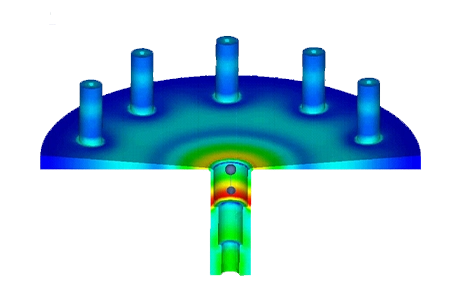
RF & MICROWAVES is the high-frequency module of EMWORKS. It is used to model electromagnetic wave behaviour in 3D and to evaluate quantities such as S-parameters, field distributions, resonant modes, radiation patterns and time-domain responses, including TDR for interconnects and transmission lines. When coupled with EMWORKS thermal solvers, RF losses can be used as heat sources to estimate temperature rise in high-power components and densely packed assemblies. Typical devices include antennas, filters, resonators, waveguides, connectors, transitions and high-speed interconnects where geometric details, material properties and thermal effects have a strong impact on performance.
RF & MICROWAVES Analysis Options
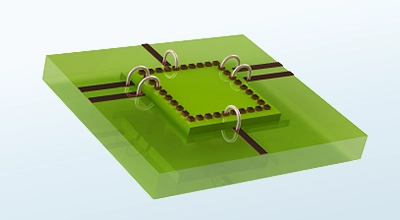
S-Parameters
Compute scattering parameters for circuits and components, including insertion loss, return loss and isolation. Use these results to assess matching, bandwidth and overall RF performance.
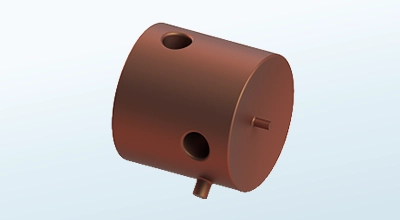
Resonance
Identify resonant frequencies and field distributions in cavities, resonators and filter structures. This helps set dimensions and materials to achieve the required frequency response.
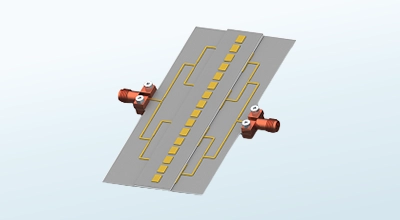
Antennas
Evaluate radiation patterns, gain, efficiency and impedance of antennas and arrays. Study the effect of ground planes, radomes and nearby structures on antenna performance.
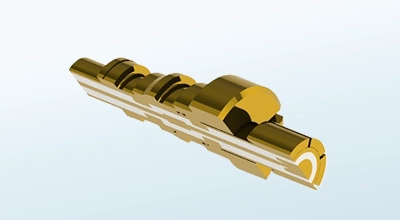
Time Domain
Analyze transient behaviour in interconnects and components, including reflections from discontinuities, crosstalk and dispersion in high-speed signal paths.
Multiphysics Coupling
In many RF applications, losses lead to temperature rise and changes in performance. RF & MICROWAVES supports coupling with thermal analysis in EMWORKS.
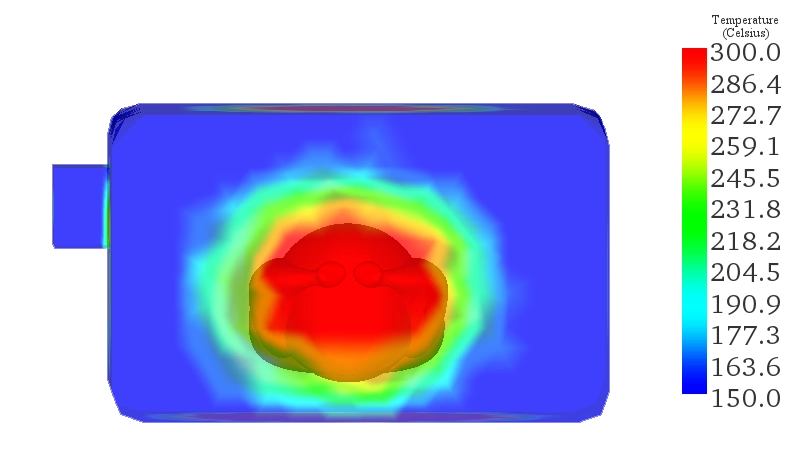
Thermal Coupling
RF power losses computed in electromagnetic studies can be transferred to thermal solvers to estimate temperature distribution and identify regions at risk of overheating or material limits. This is useful for high-power components, tightly packed boards and systems where cooling is constrained.
Applications of RF & MICROWAVES

Chip, Package, Board Systems

Connectors and Transitions

Electro-Thermal

EM Exposure

Filters

Passive Components

Planar-Printed Antennas

Printed Circuit Boards (PCBs)

Resonators

Transmission Lines

Waveguide Antennas
Why teams use RF & MICROWAVES
Design validation before hardware
To check whether the chosen geometry, stack-up and materials deliver the required S-parameters, bandwidth, matching and radiation characteristics at the target frequencies.
Understanding fields in complex 3D structures
To see where fields, currents and losses are concentrated in connectors, transitions, packages, enclosures and waveguide structures, and how changes in geometry affect them.
Troubleshooting and refinement
To investigate unexpected resonances, coupling paths, EMI/EMC issues or sensitivity to manufacturing tolerances that are hard to isolate from measurements alone.
Supporting layout and packaging decisions
To evaluate how PCB routing, via placement, shielding, grounding and housing details influence performance and interference between nearby circuits or antennas.
Complementing circuit simulation and measurement
To provide 3D field-based results that sit alongside circuit-level simulation and lab measurements, helping to explain observed behaviour and guide design changes.
Evaluate RF & MICROWAVES on your designs
If you work with RF, microwave or high-speed components and need field-level simulation in addition to circuit tools and measurements, you can evaluate RF & MICROWAVES as part of EMWORKS.
A short trial on one or two representative models is usually enough to see whether the module fits your workflows and accuracy requirements.

